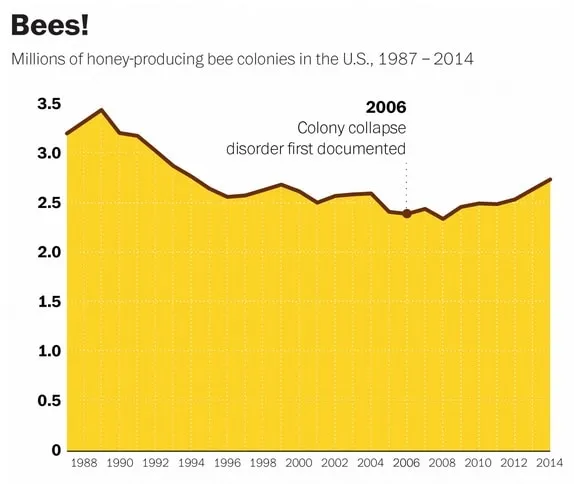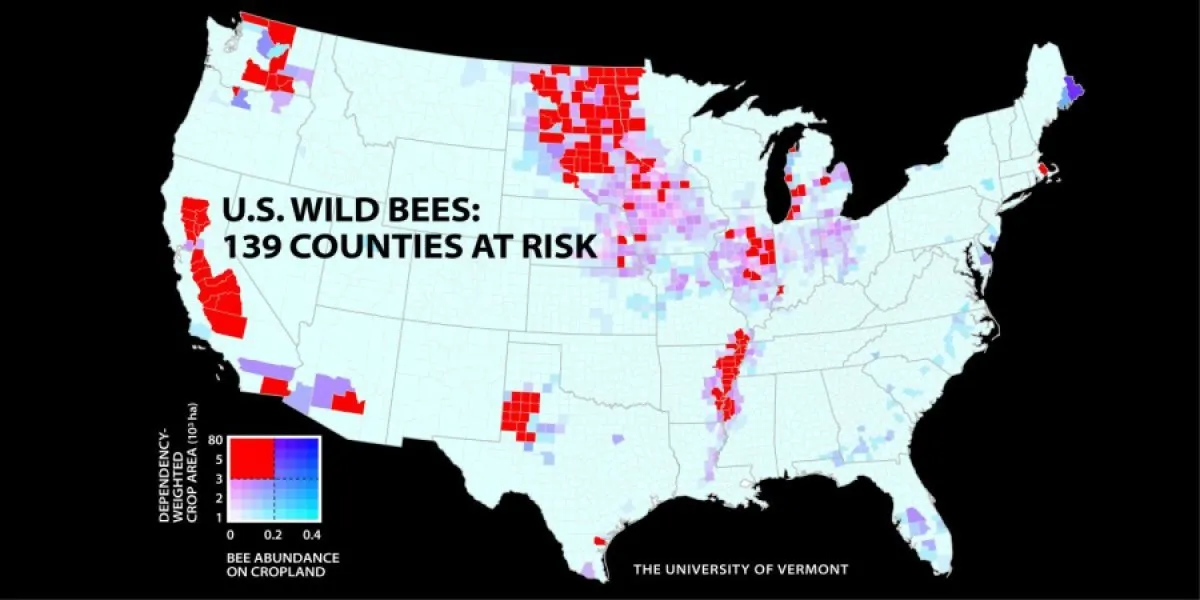
For several years now, researchers have suggested that there is an alarming decline in bee populations worldwide and there have been a variety of theories proposed as to why that might be.
Various organizations, including the UN, have issued warnings about the decline and the populations have been seen to be declining not only in the US but also in Canada, and throughout Northwest Europe; aside from other areas. It's suggested that in North America, there are perhaps hundreds of different bee species that are in steady decline and headed toward extinction.

Bee populations have allegedly suffered dramatic declines for the last several years. And just this week, the US Fish and Wildlife Service finally declared that the rusty patched bumblebee was considered an endangered species.
There are a number of researchers who have suggested that there might be a link between pesticide use and bee population decline, some say the connection is very evident.

According to yet another recent study on the topic, this time from a Canadian researcher, the results again suggest that a popularly used pesticide, known as thiamethoxam, might be to blame for putting bumblebee populations at risk.
Results from the study suggest that the neonicotinoid, the thiamethoxam, is likely responsible for grossly negatively impacting the ability of bumblebee queens to generate new colonies. The queens who had been exposed to it were about 26 percent less likely to lay eggs in other words.
Aside from being able to start new colonies, they also suggest that it might greatly impact population persistence and could be a great contributor to whether or not the population goes extinct.
On numerous occasions, the finger keeps being pointed at the role of pesticides in the problem here and researchers firmly believe that the use of them is undoubtedly some sort of factor. There have also been other ideas for what could be to blame and they're things like climate change, habitat destruction, and disease that have been named as a cause for the decline in populations.

Earlier this year, another study was released which was the first of its kind, by the University of Vermont, that was seeking to map out wild bees in the United States.
The results suggest that the decline in bee populations directly threatens US crop production and the study results produced a list of trouble zones that will be affected; 139 different counties. The results suggest that in coming years, these areas that they have identified are allegedly going to be struggling with a declining bee population in the face of rising crop pollination demand, thus establishing a trouble zone.
A number of innovative solutions have been investigated to try and combat the problem. Some innovative upgrades have been made to hive populations to try and monitor the health of populations and watch their progress. Other ideas for solutions have been things many consumers planting flower seeds in their communities (Cheerios 'save the bees' campaign gave out millions of seeds). Both individuals and businesses have been getting involved in bee-keeping, with some businesses installing bee hives on their properties to try and help the declining populations.

Pics:
Pixabay
trueactivist.com/us-beekeepers-report-that-honeybee-populations-are-growing-again/
PNAS via Science Daily
Sources:
http://www.ctvnews.ca/sci-tech/bumblebee-colonies-at-risk-of-extinction-after-pesticide-exposure-study-1.3544882
http://theconversation.com/new-study-pesticides-increase-extinction-risk-for-bumblebee-populations-82406
https://www.sciencedaily.com/releases/2017/02/170219165128.htm
http://science.sciencemag.org/content/356/6345/1395
https://www.nature.com/articles/s41559-017-0260-1
https://www.thestar.com/news/gta/2017/06/29/york-study-clears-up-controversy-over-honey-bee-declines-and-pesticide-use.html
http://time.com/4688417/north-american-bee-population-extinction/
https://www.theguardian.com/environment/2016/feb/26/decline-of-bees-poses-potential-risks-to-major-crops-says-un
https://www.thestar.com/news/gta/2017/06/07/hillcrest-mall-installs-beehives-on-roof-to-fight-declining-bee-population.html
https://munchies.vice.com/en_us/article/8qe3xp/urban-beekeeping-has-come-to-la
Related Posts:
A Groundbreaking New Way To Watch Over Bee Populations
https://steemit.com/science/@doitvoluntarily/a-groundbreaking-new-way-to-watch-over-bee-populations